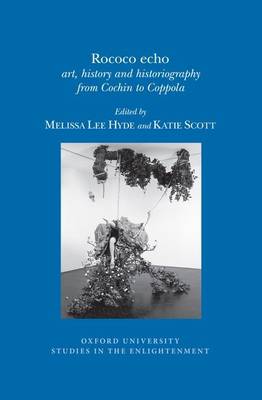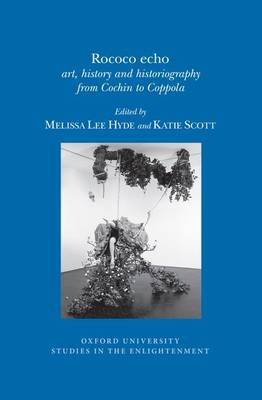
- Afhalen na 1 uur in een winkel met voorraad
- Gratis thuislevering in België vanaf € 30
- Ruim aanbod met 7 miljoen producten
- Afhalen na 1 uur in een winkel met voorraad
- Gratis thuislevering in België vanaf € 30
- Ruim aanbod met 7 miljoen producten
Zoeken
Rococo Echo
Art, History and Historiography from Cochin to Coppola
€ 85,00
+ 170 punten
Omschrijving
Intermittently in and out of fashion, the persistence of the Rococo from the eighteenth century to the twenty-first is clear. From painting, print and photography, to furniture, fashion and film, the Rococo's diverse manifestations appear to defy temporal and geographic definition. In Rococo echo, a team of international contributors adopts a wide lens to explore the relationship of the Rococo with time. Through chapters organised around broad temporal moments - the French Revolution, the First World War and the turn of the twenty-first century - contributors show that the Rococo has been viewed variously as modern, late, ruined, revived, preserved and anticipated. Taking into account the temporality of the Rococo as form, some contributors consider its function as both a visual language and a cultural marker engaged in different ways with the politics of nationalism, gender and race. The Rococo is examined, too, as a mode of expression that encompassed and assimilated styles, and which functioned as a surprisingly effective means of resisting both authority - whether political, religious or artistic - and cultural norms of gender and class. Contributors also show how the Rococo, from its birth in France, reverberated through England, Germany, Italy, Portugal and the South American colonies to become a pan-European, even global movement. The Rococo emerges from these contributions as a discourse defined but not confined by its original historical moment, and whose adaptability to the styles and preoccupations of later periods gives it a value and significance that take it beyond the vagaries of fashion.
Specificaties
Betrokkenen
- Uitgeverij:
Inhoud
- Aantal bladzijden:
- 488
- Taal:
- Engels
- Reeks:
- Reeksnummer:
- nr. 2014
Eigenschappen
- Productcode (EAN):
- 9780729411585
- Verschijningsdatum:
- 11/12/2014
- Uitvoering:
- Paperback
- Formaat:
- Trade paperback (VS)
- Afmetingen:
- 156 mm x 233 mm
- Gewicht:
- 1699 g

Alleen bij Standaard Boekhandel
+ 170 punten op je klantenkaart van Standaard Boekhandel
Beoordelingen
We publiceren alleen reviews die voldoen aan de voorwaarden voor reviews. Bekijk onze voorwaarden voor reviews.







